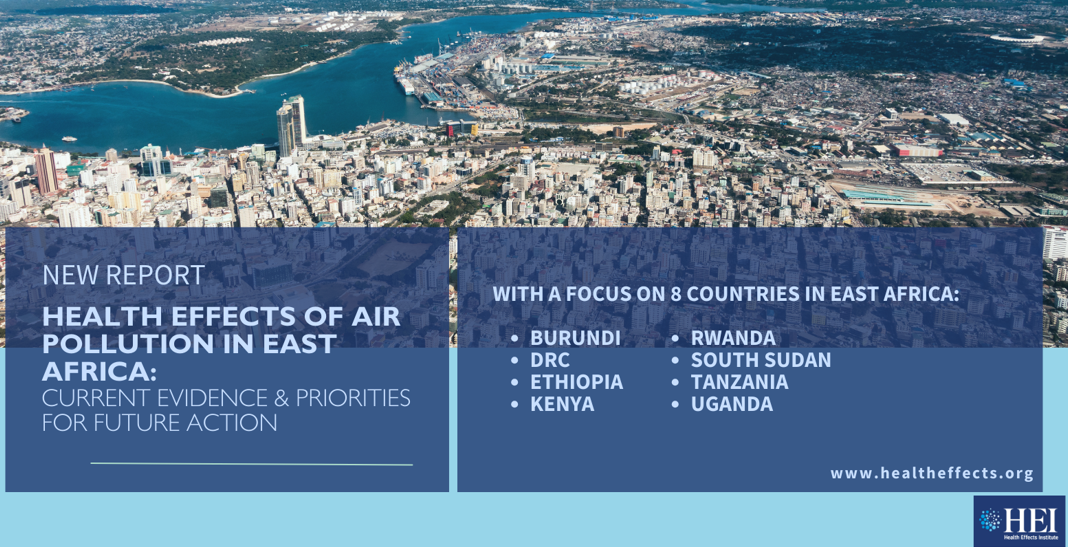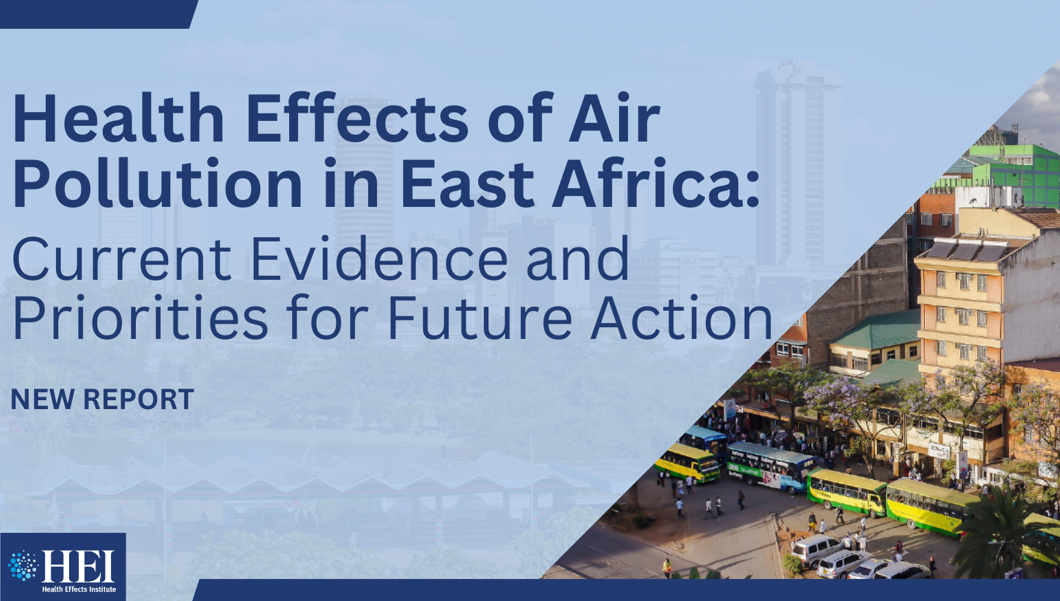

A new report by the Health Effects Institute (HEI) has revealed that air pollution is the second leading cause of death in East Africa, responsible for an estimated 294,000 deaths in 2021.
The report, Health Effects of Air Pollution in East Africa: Current Evidence and Priorities for Future Action, provides a comprehensive analysis of the health risks linked to air pollution across eight East African nations: Burundi, the Democratic Republic of the Congo, Ethiopia, Kenya, Rwanda, South Sudan, Tanzania, and Uganda.
The study, which reviewed 34 research papers, found that air pollution harms children, pregnant women, and low-income communities the most.
Tiny harmful particles in the air, known as PM2.5, can get deep into the lungs and bloodstream, leading to breathing problems, heart diseases, and pregnancy complications.


Children at Risk
Alarmingly, 30% of newborn deaths in East Africa are attributed to air pollution exposure, particularly from household air pollution caused by the widespread use of solid fuels such as charcoal and firewood
"Children are particularly vulnerable, with exposure to air pollution linked to reduced lung function, cognitive impairment, and stunting," the report notes.
A study in Uganda found that schoolchildren exposed to high levels of air pollution had significantly lower lung capacity. In Kenya, children living in urban slums were found to have an increased risk of respiratory infections and higher child mortality rates due to polluted air.
Urban Air Quality Worsening
The report also paints a grim picture of air quality in East African cities. Kampala, Uganda, recorded the highest PM2.5 concentration at 49.4 μg/m³, far exceeding the World Health Organization’s (WHO) safe limit of 5 μg/m³. Nairobi, Addis Ababa, and Dar es Salaam also reported worsening air pollution levels, largely driven by vehicle emissions, industrial activities, and open waste burning.
Expert Insights: What Can Be Done?
To gain deeper insight, we spoke with Victor Nthusi, a
Consulting Research Fellow, on the challenges and solutions surrounding air
pollution in East Africa.
1. What policy interventions have been most effective in reducing air pollution, and what gaps remain?
Nthusi: "The largest burden of disease from air pollution in East Africa comes from household air pollution, primarily from the use of solid fuels for cooking. While interventions promoting cleaner cooking technologies have been successful in reducing exposure, sustaining these alternatives remains a challenge due to the high costs for poor households. Investing in long-term health studies could provide conclusive evidence on the impact of these interventions."
2. How does air pollution exposure in East Africa compare to other regions globally?
Nthusi: "East Africa has a higher burden of ambient PM2.5 pollution from solid fuels compared to other regions in Africa. In East Africa, 20-25% of PM2.5 pollution comes from residential solid fuel use for cooking, compared to 10% in West, Central, and Southern Africa. However, we are seeing promising efforts in the region, such as the adoption of National Ambient Air Quality Standards (NAAQS) and the use of WHO air quality guidelines as a framework for progressive pollution reduction."
3. What are the biggest challenges in expanding air quality monitoring in East Africa?
Nthusi: "The biggest challenges include long delays in procuring monitoring equipment, limited access to spare parts, and the high cost of maintenance. Currently, East Africa has only 0.03 air quality monitors per million inhabitants, compared to 3 per million in high-income countries. To bridge this gap, governments should explore low-cost sensors, satellite data, and remote sensing methods to supplement existing monitoring networks."

Urgent Need for Policy Action
Despite some progress, the weak enforcement of air quality
regulations remains a major hurdle. While countries like Kenya and Rwanda have
national air quality standards, others—such as the Democratic Republic of the
Congo and South Sudan—lack formal regulations to address air pollution.
Experts urge policymakers to expand air quality monitoring networks, enforce clean energy initiatives, and prioritize investments in air pollution research.
"We need urgent action to curb emissions and transition to cleaner fuels if we are to save lives and protect public health," the report states.
With air pollution-related deaths on the rise, the report
calls for stronger regional collaboration, investment in clean cooking
solutions, and stricter enforcement of environmental policies to curb this
silent killer.











